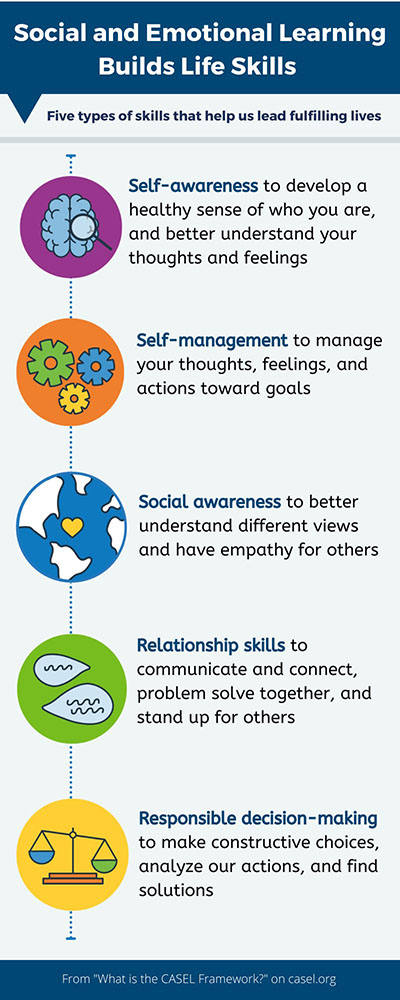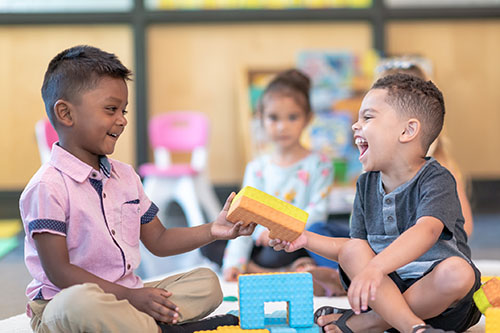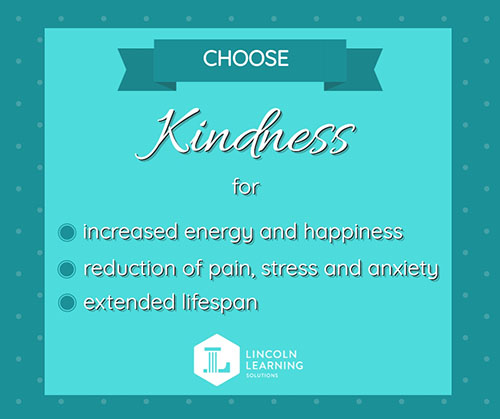Fostering acts of kindness is more important for humanity than ever before. Teaching kindness at all age levels supports social and emotional development and growth.
Understanding the connection between social-emotional learning and kindness will help you to encourage these skills in children, whether at home or in the classroom.
Social Emotional Learning and Kindness
The benefits of social and emotional learning (SEL), including improved academic performance, social skills, and attitudes, have been proven to be effective and long-lasting. In addition, SEL can reduce emotional distress, conduct problems, and drug use.
The Collaborative for Academic, Social, and Emotional Learning (CASEL) offers this great infographic on how SEL builds life skills.

Acts of kindness can support social and emotional learning areas. Activities that focus on improving relationship skills, such as active listening, conflict resolution, collaboration, and fostering empathy, encourage kindness.
To support the connection between SEL and kindness, parents and teachers alike can explore the following options.
- Model kindness by setting and mirroring the example.
- Explain what empathy is and show how to be empathetic.
- Encourage children to give compliments to others.
- Discuss how acts of kindness make children feel and how others feel when someone is kind to them.
- Celebrate kind acts.
For more ideas on teaching kindness, check out this resource from PBS and visit the We Teach Kindness website.

Kindness Contagion
Kindness is a bug children want to catch, and there is science to back it up. Studies have shown that acts of kindness can boost the chemical messenger in the brain known as dopamine, which increases euphoria. This reaction is known as a “helper’s high.”
Additionally, acts of kindness can increase serotonin levels, which contribute to mood regulation. Kind gestures also heighten oxytocin levels. Known as the “love hormone,” oxytocin helps kids bond to others and their community.
If those aren’t enough reasons to be kind, consider these health benefits of bestowing kindness.

Kindness Acts
Being kind doesn’t mean you have to perform a grand gesture. Small achievable acts, like holding the door for someone, offering to take a shopping cart back into a store, or sharing a box of crayons, can easily spread kindness among others. If you need ideas, check out this list from randomactsofkindness.org. Remember, being kind to yourself is just as important as being kind to others.
Tell us about your random acts of kindness in the comment section below, and explore our related blog on supporting self-efficacy in your child.

Amanda Clear is a supervisor for Lincoln Learning Solutions and has been with the company for eight years. The scope of her work includes promoting market research, consumer insights, and project management. Amanda has a Masters in Applied Psychology. She is married with three young boys. Amanda is a veteran of the Pennsylvania Army National Guard and volunteers as a youth group leader and soccer coach.




